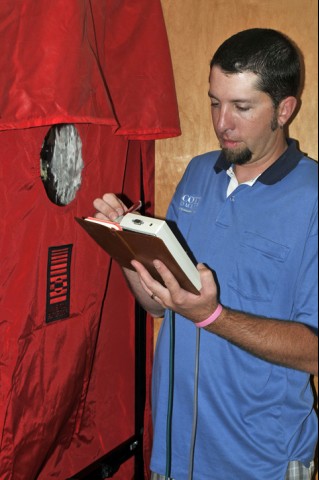Energy Efficient Mortgages (EEM) Guide
Guide to Green Mortgages or Energy Efficient Mortgages
Introduction
What’s a "Green Mortgage"? It is a term that many, even the most environmentally focused of us, have not heard before. And it’s not what you might think. It is not a marketing or public relations effort. It is a program backed by private and government mortgage programs designed to help you make your home more energy efficient.
Green, or "Energy efficient" mortgages, let you borrow extra money to pay for energy efficient improvements to your current home or a new or old home that you plan to buy. The result is a more environmentally friendly living space that uses fewer resources for heating and cooling, is more comfortable, more healthy and has dramatically lower utility costs. The types of things that are covered include improvements that you may have thought you couldn’t afford like; insulated low-E glass windows, tankless or efficient water heaters, efficient HVAC systems and more insulation.
At this time, Energy Efficient Mortgages aren’t second mortgages. Though they are calculated separately from your primary mortgage, then they are ultimately rolled into your primary mortgage—so you only make only one payment per month.
Like most people these days, you probably already do your share of "green" practices like recycling and turning off the water when you brush your teeth. But you probably thought that really big things, like renovating or upgrading your home to make it more energy efficient were financially out of your reach.
Here are a few facts that will give you an idea of how upgrading your home can help save you a lot of money and reduce your home’s carbon footprint:
- Overall, heating and cooling accounts for 50–70% of the total energy used in the average American home.
- 60% of the existing homes in the US are not properly insulated.
- Updating your home’s insulation can save you up to 20% on heating and cooling costs or up to 10% of your total yearly energy bill.
According to the Department of Energy, energy loss from outdated windows accounts for
nearly 25% of the annual heating and cooling costs for the average American home.
Even the most basic insulated glass window can reduce energy use by up to 24% in cold
climates during the winter and by up to 18% in hot climates during the summer.
In houses with central air and heating, about 20% of the air is lost due to faulty, leaky, outdated duct work.
A new Energy Star-rated dishwasher can save you up to $13 each month. The dishwasher accounts for 2% of your gas or electric bill) and as much as 1,200 gallons of water a year.
Programmable thermostats can save about 2% on heating bills and more than 3% on cooling bills. These numbers can translate into savings of up to $180 a year.
Green mortgages are a concrete way for families to both save money and make a large scale change in the way that they live their lives in regard to the environment. Green Mortgages, either as part of a mortgage refinance or added on to a new mortgage, are a smart way to pay for energy efficient features to your current house, a house that you plan to buy or to get credit for the features that your new home already has.
Making your house more energy efficient isn’t just about helping the environment and saving you money. Energy efficient homes are cooler in the summer and warmer in the winter, cost less to maintain, have lower monthly utilities costs, and generally last longer. Overall, an energy efficient home is more comfortable all around. This means not having to deal with drafts in the winter, not worrying about the cost of cranking the heat or AC when company comes over, and having peace of mind that your children, pets, and older visitors will always be in a comfortable, healthy environment.
- Green Mortgages can help you do the following:
- Get money to invest in energy efficient improvements for a new house.
- Help you to qualify for a larger mortgage to pay for a house that is already energy efficient.
- Qualify you for money for green renovations or improvements when refinancing a
- mortgage.
- Make older homes more comfortable and more affordable with lower utility payments.
- Help you to use less energy to maintain the temperatures in your home and therefore
- lessen you family’s carbon footprint.
Whatever your reason for wanting to pursue this type of mortgage, the results are the same: a more comfortable, more energy efficient, more environmentally sound home that is cheaper to maintain and has lower monthly utility costs.
Purpose of this Guide:
You don’t have to be a mortgage guru to use and understand this guide—and even if you are, you will be able to pick up some useful tips. You should find this guide helpful whether you are looking for a new home, refinancing an old one, or just want to know more about Energy Efficient Mortgages. After reading this document, you will have a better understanding of:
- Energy Efficient Mortgages
- Who they benefit
- What they can pay for
- How to get one
- Why you might want to get one
- Why these upgrades really matter to your wallet
- Why these upgrades matter to the environment
Jon Howes
Professionally Certified

BPI Certified Building Analysts
RESNET Certified HERS Rater
RRP - Certified Lead Paint Renovator
Colorado Energy Analysts
Certified Energy Rater
Scott Homes, Ltd., Designers & Builders
Construction Superintendent
 |
 |
 |
Schedule An Inspection
By Phone or Email we can schedule the services you desire to begin saving money on your utility bills!
Contact Us Online
Email us at info@ColoradoEnergyAnalysts.com
© Copyright 2013-2024 - Colorado Buys Local Inc | Designed for Colorado Energy Analysts